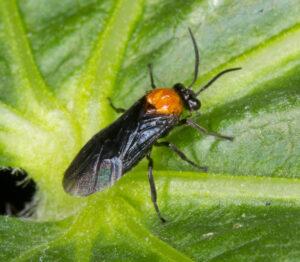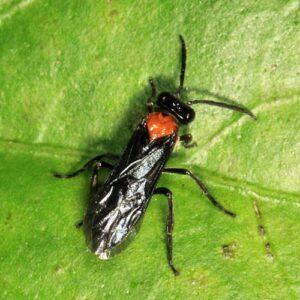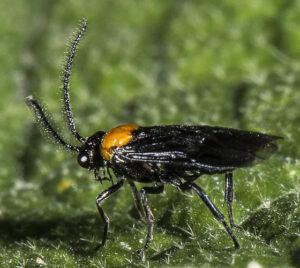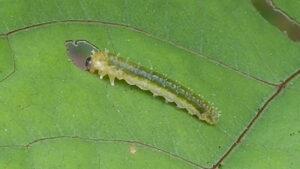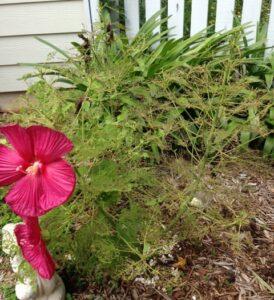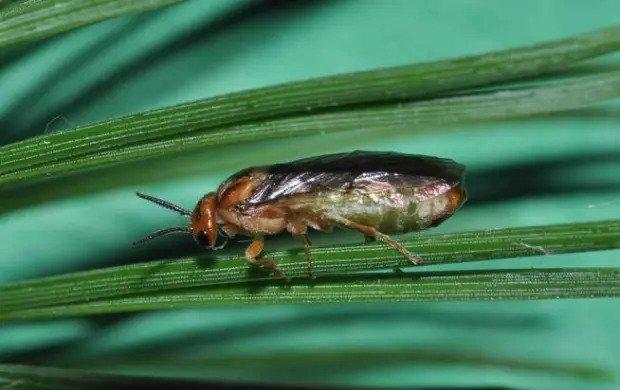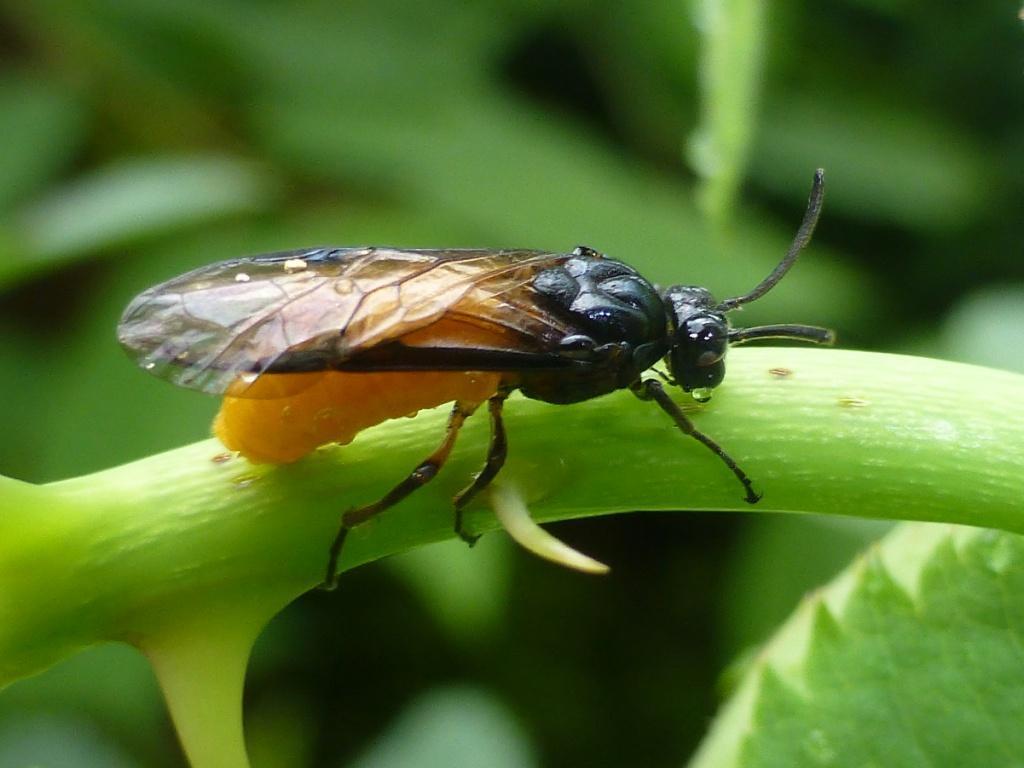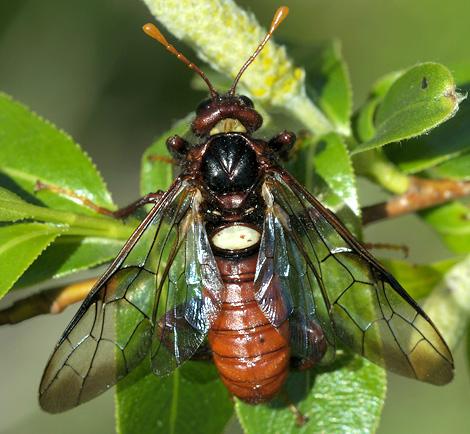Hibiscus Sawfly (Atomacera decepta)
Updated on
30/11/2022The hibiscus sawfly is a species known for defoliating hibiscus plants like rose mallow.
Scientific Classification
- Class:Insecta
- Order:Hymenoptera
- Family:Argidae
- Genus:Atomacera
- Species:A.decepta
Conservation Status
Description
The hibiscus sawfly is 0.19 inches long. They have fat waists and dark wings, making them appear similar to a wasp. The insect’s entire body is black except for an orange spot on the thorax.
Distribution: The United States
Habitat: Wherever Hibiscus flowers are grown
Do they sting: No
Lifespan: 7-9 days
Predator: Birds, shrews, larvae of beetles and flies, etc.
Behavior and Characteristics
Feeding
Larvae primarily feed on the rose mallow variant of hibiscus as well as other hybrids.
Life Cycle
This sawfly has a life cycle of about 28 days.
1. Egg Stage
Six disc-like eggs are laid in multiple rows in the leaves of the host plant.
2. Larva Stage
The larvae are yellowish-green, with a dark head and 6-8 black tubular glands on each segment of their bodies. They resemble the larvae of butterflies or moths but can be distinguished from fewer prolegs.
3. Pupa Stage
Once the larvae mature at about 0.5 inches, pupation occurs inside a straw-colored, fibrous cocoon.
Getting Rid of Them
If left unchecked, these sawflies can destroy healthy plants after building up for an extended period. Leaves in which eggs are laid develop brown blisters. As removing the larvae by hand may be impractical, insecticides like acephate, pyrethrins, pyrethroids, and spinosad may be more effective.
Source
inaturalist.ca, vpm.org, bugguide.net, walterreeves.com




